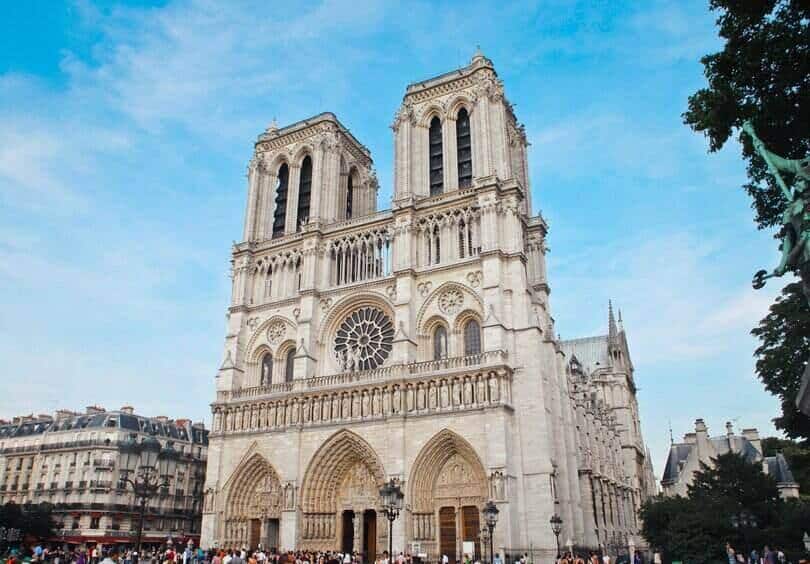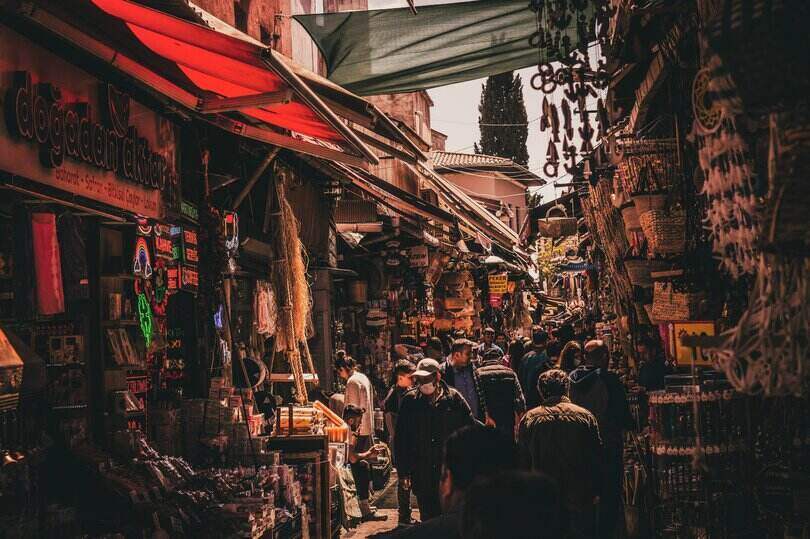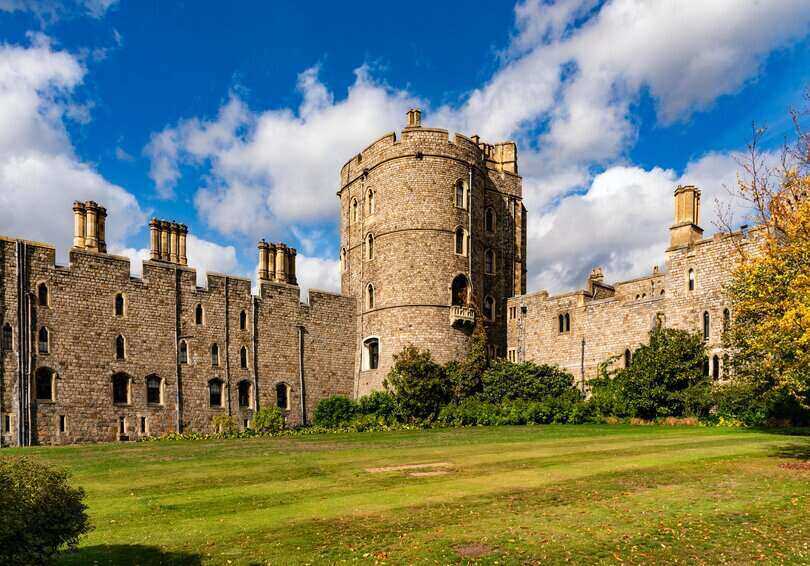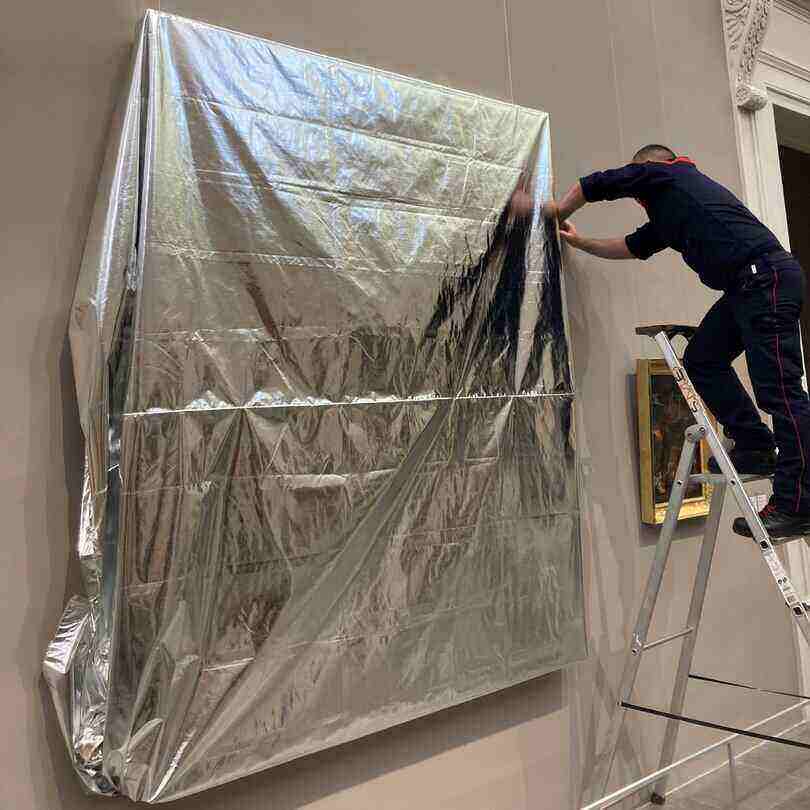The semiconductor industry demands precision, innovation, and relentless efficiency. As chip manufacturing evolves, the materials…

Buildings And Artworks – EU Cultural Assets Damaged By Fire
The European Union is home to many iconic and priceless historical buildings and artworks, some of which have sadly been damaged by fire. Fire can devastate cultural heritage, with irreplaceable masterpieces lost forever in minutes. This article will look at the impact of fires on EU cultural assets, including some examples of damage caused.
What Is A Cultural Asset Or Artwork?
A cultural asset is any item, natural or man-made, that has historical, artistic, scientific, or social importance. Artworks are one type of cultural asset and can include paintings, sculptures, monuments, and street art. Buildings such as museums, cathedrals, and schools are also considered cultural assets due to their significance within the local community and their contribution to a place’s history, culture, and identity.
The economic development of a region is often closely linked to its cultural assets, making the protection and conservation of these items especially important. When cultural industries such as tourism, entertainment, and education rely on these assets, the economic impacts of their destruction can be devastating.
A Look At Some Of The EU’s Most Famous Cultural Assets That Have Been Damaged By Fire
Notre Dame Cathedral in Paris

Notre Dame Cathedral is one of the most iconic landmarks in Paris and has been a symbol of French culture for centuries. Unfortunately, it was damaged by fire in April 2019 when the spire collapsed. The blaze also caused significant damage to the roof and some of its famous stained-glass windows. Despite the tragedy, conservation experts have salvaged a significant portion of the building’s iconic art, including sculptures and carvings. The restoration process is now underway and is expected to last until 2024. The intellectual property rights of the artworks have been protected, and the building has been declared a UNESCO World Heritage site.
Glasgow School of Art
The Glasgow School of Art (GSA) is one of Scotland’s most iconic art institutions and is renowned for its collection of modernist architecture. Unfortunately, in May 2014, the building suffered significant damage when it was gutted by fire. As a result, several artworks were destroyed or damaged, including paintings by Scottish artist Charles Rennie Mackintosh.
The GSA has since taken great steps to restore the building and its artwork, with contributions from leading restoration experts. The institution has also received financial support from the Scottish government, which will go towards restoring some of the more delicate pieces in its collection. When local communities came together to help in the restoration process, it was a true testament to art’s impact on people’s lives.
St Mel’s Cathedral in Longford, Ireland
St Mel’s Cathedral in Longford, Ireland, was a stunning example of Gothic architecture and is renowned for its intricate carvings and stained glass windows. However, on Christmas Day 2009, the building suffered significant damage when a devastating fire destroyed it. Fortunately, the locals acted quickly to save some of the artwork stored inside the building. Around 50% of the artwork was salvaged and is now held in a specialist archive for safekeeping.
Musée de l’Île de Tatihou
The musée de l’Île de Tatihou in Normandy, France, is a unique cultural space that houses some of the region’s most important artworks. In 2007, the museum suffered significant damage when a devastating fire hit it. Fortunately, experts saved some of the museum’s sculptures and other artworks, including a collection of 18th-century paintings. The museum has since been restored and is now open to the public, allowing visitors to appreciate the works of art that were saved from destruction.
Santander Museum of Modern and Contemporary Art
The Santander Museum of Modern and Contemporary Art in Spain is a world-renowned cultural space that houses some of the country’s most important artworks. In April 2020, the museum suffered significant damage when it was damaged by fire. Fortunately, the flames didn’t reach any of the artwork inside but did cause extensive damage to the building itself.
The museum is now undergoing repairs and renovations and is expected to reopen in spring 2021. It will feature more than 1,500 works of art and will include pieces from Spanish masters such as Picasso, Miró, Dalí, Tàpies, Barceló, and many other renowned artists. Visitors can explore the artworks in a variety of interactive displays and learn more about their historical context and meaning. Additionally, the museum will host educational activities, special exhibitions, and workshops to engage visitors in the art of Spain.
Souk marketplace — Aleppo, Syria

The Souk marketplace in Aleppo, Syria, has been a bustling center of cultural and economic activity for centuries. Unfortunately, its historic buildings were badly damaged in 2016 when the conflict engulfed Syria since 2011 reached its peak. The souk is slowly being rebuilt, but much of the damage to both the architecture and artwork within the market has been irreparable.
The Souk was known as a center of hospitality and shopping since it contained hundreds of shops that specialized in different wares. From Aleppo’s famous souvenirs to food, cloth and fabrics, spices, jewelry, and more, the Souk was a vibrant space filled with local and regional treasures. Many of these merchants also provided services such as tailoring and repair work on traditional garments.
Royal Clarence Hotel
The Royal Clarence Hotel in Exeter, England, is the oldest hotel in the country and a symbol of Britain’s rich history. In 2016, it suffered severe damage when a fire engulfed much of its structure. The building was restored following extensive renovations over two years. However, much like many other cultural assets damaged by fire, the damage to the artwork, furniture, and other items stored within was not so easily fixed.
The hotel has since reopened, but it will never be the same. The heritage sites and artworks lost to fire remind us of the importance of protecting and preserving our cultural heritage. By ensuring fire safety in historic buildings, we can help preserve the cultural legacies of past generations for future generations to enjoy.
SPECIAL MENTION (FIRE BEFORE THE 2000s)
Flakturm Friedrichshain fire
The Flakturm Friedrichshain in Berlin was a historic landmark with immense symbolic significance to the city. In 1943, during World War II, it suffered extensive damage when a fire broke out and engulfed much of the structure. Although the building was eventually demolished, many artworks were miraculously saved from destruction. This event serves as a reminder of cultural assets’ fragility and the need to protect them from disasters such as fire.
Windsor Castle

Windsor Castle, one of the most iconic buildings in the United Kingdom, is also a symbol of its rich cultural heritage. In 1992, it suffered immense damage when a fire engulfed much of the castle. After five months of restoration and repair, Windsor Castle reopened to the public, but many artworks were lost to the flames and could not be recovered. The event serves as a reminder of how vulnerable our cultural assets can be and the importance of taking steps to protect them from fire.
Common Causes Of Fire In Buildings And Artworks
There are many potential causes of fire in buildings and artworks, including faulty wiring and improper installation of electrical outlets, lighting equipment, and stoves. Compact fluorescent lamps, halogen lamps, and overheated motors can also create a spark or short circuit, igniting combustible materials. Additionally, smoking indoors is a major cause of fires in both residential and commercial structures. Just as the natural environment is vulnerable to harm from human activities, so too are our cultural assets.
In the cases mentioned above—the Souk Marketplace, Royal Clarence Hotel, Flakturm Friedrichshain, and Windsor Castle—the damage done by the fire was extensive. In each instance, the flames destroyed large parts of the buildings, and many priceless artworks were lost to the fire. The events remind us of our fragile cultural heritage and the importance of taking steps to protect them from disasters such as fire.
Efforts Being Made To Protect Cultural Buildings And Artworks From Fire
To protect cultural assets from fire, several measures can be taken. In buildings and dwellings, smoke detectors should be installed in all rooms and levels and near exits. Fire extinguishers should also be placed throughout the structure in easily accessible locations. Furthermore, individuals must be aware of the potential risks of using fire in residential and commercial spaces, such as smoking indoors or leaving lit candles unattended.
The European Union has implemented various policies to protect cultural buildings and artworks from fire. For instance, the EU’s Creative Europe program provides funding for preserving and restoring heritage sites throughout the continent. In addition, the European Commission has set up various agencies and initiatives focused on improving fire safety standards in historic buildings.
In the legal protection sphere, the EU has implemented legislation such as the Fire Safety Directive and the Cultural Heritage Act, which are designed to regulate fire safety requirements in Member States. The European Commission is also working with UNESCO to promote cultural heritage protection at a global level.
The measures taken by the European Union demonstrate its commitment to preserving our cultural assets from harm and serve as a reminder of the importance of protecting our cultural heritage from disasters such as fire.
OTEGO – Developing Products To Protect Cultural Assets
OTEGO is an innovative provider of high-performance technical textile solutions. They offer a range of products to help protect people and assets from the dangers of fire and heat. These include flame-retardant fabrics, protective covers, seam-sealing tapes, and other specialized materials that can be used for insulation. OTEGO’s products have been designed to provide optimal protection against fire and heat while allowing the objects they cover to retain their value.
OTEGO Fireguard – Aluminized Cover For The Protection Of Works Of Art And Valuables

Integration with emergency plans: The OTEGO Fireguard can be integrated into the PSO (Works Safeguarding Plan) and PSBC (Cultural Property Safeguarding Plan) of heritage buildings. PSO and PSBC are equivalent to Emergency Plans which are documents that detail the priority artwork that need to be saved in case of emergency, and the procedure on how to save them. The Fireguard meets the highest standards of fire resistance and can be used to protect cultural assets from hazards.
Water tightness: OTEGO Fireguard is also designed to be watertight to protect the objects it covers from moisture damage. Suppose a fire sprinkler system was to be triggered during a fire, the protective cover would help to keep the objects inside dry.
Smoke and soot resistance: The OTEGO Fireguard is also designed to be highly resistant to smoke and soot. This makes it the ideal choice for protecting cultural assets from the damage caused by smoke and soot in the event of a fire.
Ease and speed of installation: The Fireguard is also designed to be easy to install, making it ideal for emergencies.
The OTEGO Fireguard effectively protects cultural assets like artworks from fire dangers. The product offers a level of fire safety that is second to none. Furthermore, its watertight seams, smoke and soot resistance, and ease of installation make it great for protecting cultural assets.
With OTEGO’s help, you can ensure that cultural assets remain safe and sound for many years. Contact us to know more about our products.


